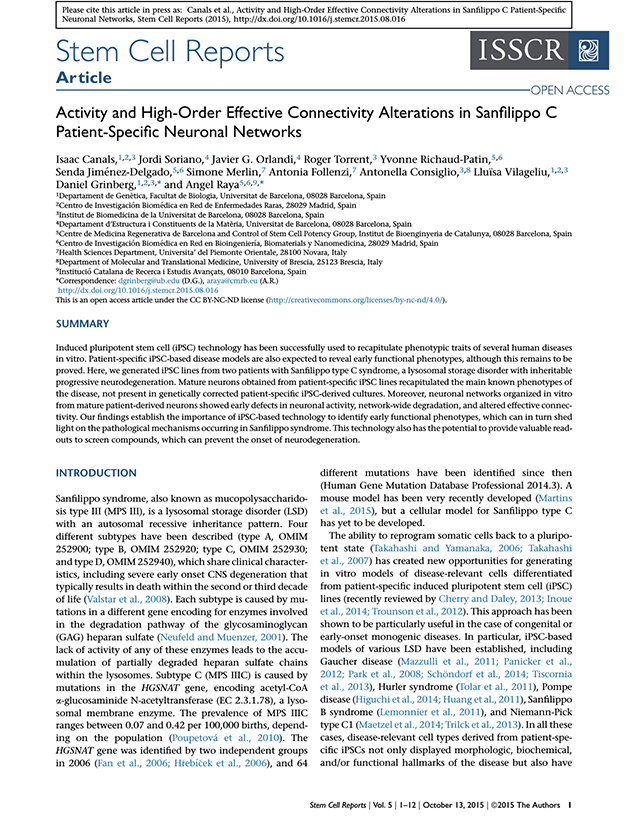I. Canals, J. Soriano, J. G. Orlandi, R. Torrent, Y. Richaud-Patin, S. Jiménez-Delgado, S. Merlin, A. Follenzi, A. Consiglio, L. Vilageliu, D. Grinberg and A. Raya
Stem Cell Reports 5, (2015)
Abstract:
Induced pluripotent stem cell (iPSC) technology has been successfully used to recapitulate phenotypic traits of several human diseases in vitro. Patient-specific iPSC-based disease models are also expected to reveal early functional phenotypes, although this remains to be proved. Here, we generated iPSC lines from two patients with Sanfilippo type C syndrome, a lysosomal storage disorder with inheritable progressive neurodegeneration. Mature neurons obtained from patient-specific iPSC lines recapitulated the main known phenotypes of the disease, not present in genetically corrected patient-specific iPSC-derived cultures. Moreover, neuronal networks organized in vitro from mature patient-derived neurons showed early defects in neuronal activity, network-wide degradation, and altered effective connec- tivity. Our findings establish the importance of iPSC-based technology to identify early functional phenotypes, which can in turn shed light on the pathological mechanisms occurring in Sanfilippo syndrome. This technology also has the potential to provide valuable read- outs to screen compounds, which can prevent the onset of neurodegeneration.
